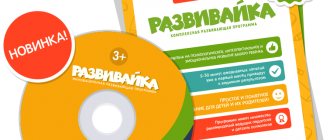We have said more than once that English for children should be taught exclusively in a playful way. You can teach children a new language with the help of colorful cards, funny songs and rhymes, and funny videos. A computer program for learning English for children will also be a good help in classes. It’s the 21st century and there’s nowhere to hide or hide from children’s love for technical toys. Therefore, today’s material will be entirely devoted to finding the optimal computer or mobile course for teaching English to preschool children.
Can computer games be useful?
The debate about the dangers and benefits of teaching children to use a computer from an early age will probably never subside. We will not delve into all the positive and negative facts of computerization, but we will immediately make a reservation that we recommend using computer games in English only as additional material. They can devote one small lesson a week, for example, 20-30 minutes on a weekend, or 5-10 minutes to review the learned vocabulary at the end of each lesson.
If programs and games for learning English cannot be a full-fledged textbook, then why use them at all? The answer is simple, again so that English seems to your children not as a strict duty, but as useful and interesting entertainment. In addition, this form of training has a number of special advantages.
A computer program for learning English helps the learner:
- remember sounds and letters;
- learn new vocabulary;
- listen to the correct pronunciation of words;
- master reading skills;
- gain first knowledge of grammar;
- learn the cultural traditions of the country;
- test the acquired knowledge.
As you can see, with games you teach children many useful things. But not every computer program is suitable for learning from scratch and will captivate a child into the world of the English language. In the next section we will learn how to choose the right computer training courses for preschool children.
Teaching English to children 3-4 years old – goals and objectives
Before starting homework or lessons in a circle, it is appropriate to determine why children 3-4 years old need to learn English. Make a short list of goals and objectives so that you can focus on them in the future when selecting lesson material.
The list might look like this:
• Learning English is interesting and useful for overall development • English in the future will expand the horizons for a child’s study and work • In just a few years, the child will be able to take part in international competitions and competitions • At the age of active communication, my child will be able to communicate via the Internet with peers from different countries • Learning a foreign language will help my child get used to the learning process and treat knowledge with respect and interest
After compiling a list of goals for teaching English to children 3-4 years old, it is worth drawing up a detailed lesson plan.
What should be the English learning program for children?
There are two main criteria by which the effectiveness of an interactive program for activities with children is assessed: the children’s interest and the usefulness of the material. In order for both of these factors to be positive, you need to pay attention to the following points when choosing a course.
1) Interface
First of all, the program should be convenient and pleasant to work with. Even the presence of all subsequent factors will not allow you to conduct classes without a comfortable control mode. Ideally, the interface should be so intuitive and simple that the child can independently complete all the lessons and tasks. Otherwise, such lessons will simply be meaningless.
2) Difficulty
Focus on the child's level of preparation. The material should not be difficult for children to understand, but it should not be too easy.
If you are just starting to learn English for kids, then be sure to make sure that the curriculum has a section on letters and sounds. At the same time, for children over four years old, such information is hardly of any interest. Here you need to pay close attention to the presence of useful vocabulary, a small explanation of grammar, etc.
Other English topics: Seasons in English: word meanings, songs and poems to remember
3) Material supply method
Children's attention is attracted, of course, not by the educational “filling”, but by the beautiful wrapper, i.e. means of providing new information. A good course can influence all organs of perception. To do this, the program must have:
- bright and child-friendly pictures;
- clear and not too fast voice acting;
- funny songs or dialogues;
- colorful animated videos;
- entertaining interactive games.
All these factors can interest a child in learning English.
4) Storyline
Short individual lessons are unlikely to be interesting even for children 4-5 years old, let alone older children. The program must have a plot and various characters. Firstly, it is more interesting for the child to study, and secondly, the desire to find out what happens next in the plot story will push the children to master new information.
5) Knowledge testing system
The interest of children must be constantly maintained, therefore a system of bonuses should be provided for the correct completion of tasks. It can be anything: game points, various certificates and diplomas, increasing the game level, hidden videos that open only with all the correct answers, etc.
The verification format is also important. For children who are only 3-4 years old, voice acting of both the task itself and all the words involved in it is required. Tasks must be explained clearly and understandably. Also, a good program always has hints in stock, designed in case the child finds it difficult to pass the test or thinks too long about its solution.
This, in theory, should be an effective program for learning English for children. Now let’s take a practical look at which computer applications have earned recognition from children and their parents.
Methods of teaching English to 3-year-old children: a detailed analysis
There are several generally accepted methods of teaching English to 3-year-old children. Among them, the most effective are:
• Zaitsev's training system Regular classes are conducted using special game cubes. They are different in weight, colors, and make different sounds. Words and syllables in English are printed on the edges of the cubes. This is how the child learns to reproduce simple vocabulary from memory and becomes familiar with the phonetics of foreign speech.
English lesson plan for children 3 years old per week (table)
The weekly English lesson plan for 3-year-old children from Tap to English is an example for parents. The content of the classes is selected separately from open sources - the Internet, books, applications, and so on. The most important thing is to try to include as many useful and exciting games into the process as possible and to “switch” the baby from one activity to another in a timely manner so that he does not get bored.
| Day of the week | Time of day | Lesson structure |
| MONDAY | MORNING | Working with cards Learning 2-3 new words A game |
| DAY | Watching a cartoon in English Parsing a picture book Working in a mobile application for children | |
| EVENING | Repeating words learned in the morning Memorizing a song or short poem | |
| TUESDAY | MORNING | Repeat a poem or song learned the day before Watch a cartoon in English |
| DAY | Game (optional) Cartoon in English | |
| EVENING | Repeating words learned yesterday morning Learning 2-3 new words | |
| WEDNESDAY | MORNING | Repeat words Repeat a song or poem Game (optional) |
| DAY | Working with cards (optional) Learning 2-3 new words Repetition of words learned in 3 days | |
| EVENING | Cartoon in English | |
| THURSDAY | MORNING | Repeat words learned the day before Learning a new song or poem in English Game (optional) |
| DAY | Work in the mobile application Repeat a song or poem | |
| EVENING | Cartoon in English Repetition of words learned yesterday | |
| FRIDAY | MORNING | Working with cards Drawing on a topic (using English words) |
| DAY | Repeat a song or poem Review of words learned during the week Cartoon in English | |
| EVENING | Cartoon in English | |
| SATURDAY | MORNING | “Performance” in front of the family with any poem or song studied during the week |
| DAY | Going to a park, cinema or festival, watching a film about Great Britain or English children with further discussion in English | |
| EVENING | Rest | |
| SUNDAY | MORNING | Learning 2-3 new words |
| DAY | Cartoon in English | |
| EVENING | Rest |
It is worth noting that this is a sample lesson plan: each child is individual. Someone has sufficient perseverance and will take part in each of the points of the plan with interest. And for some it will be difficult to do this every day. Each parent makes decisions on the duration, content and frequency of classes independently, based on knowledge of the character traits of their child.
And most importantly, in teaching English, as in everything else, focus ONLY ON THE CHILD AND HIS INTEREST . Don't try to achieve your own goals at his expense. The child involved in the process will not experience dissatisfaction and frustration before, during and after the lesson.
Methods of teaching English in kindergarten
- October 20, 2020
Teaching children is not as easy as it seems.
Despite the fact that a teacher of children does not necessarily have to teach them complex tense agreement, irregular verbs, or the use of gerunds, he must know a huge number of effective ways to retain attention and instill interest in English. Therefore, in kindergarten, it is important to know how to teach. Knowledge of teaching methods, techniques, and technologies is a key factor in the education of preschool children.
Modern methods of teaching children
There are many modern methods of teaching English, but only some of them have proven effectiveness:
Montessori method
The motto is “I will do everything myself!” If a kindergarten declares that it builds an educational process according to the Montessori method, then its premises must be specially equipped and decorated. Didactic materials should be available to the child: books, pictures, puzzles, toys, drawings. According to Montessori, the child must want to learn on his own, only then will learning make sense.
The role of the teacher is secondary, he should neither control, nor encourage, nor advise - only observation and help if absolutely necessary, if the child himself asks for it.
The advantages are:
- Development of independence.
- A clear understanding of your needs.
- Freedom of choice and creative development of the child.
Minuses:
- It is difficult for a child to adapt to a traditional school.
- Children do not learn how to do this or that action correctly, and may pronounce words or use material incorrectly from the very beginning.
- The teacher cannot assess the child’s level and guess how long it will take to learn English.
Waldorf technique
Credo: “Don’t force the child!” When teaching a child using this method, he is introduced to the real world: teaching materials of natural origin - leaves, cones, mushrooms, berries, tree bark, stones or an ice cube.
A child is considered an individual with his own personal needs, requirements, and characteristics. It is not customary to give grades, the principle of respect for the individual is fostered, creativity is encouraged in every possible way, the main emphasis is on needlework, gardening, and other crafts.
Pros:
- Non-standard personality development.
- Gaining original skills.
- Development of creativity and imagination.
Minuses:
- Difficult adaptation to school, college, traditional way of life.
- Without grades, it is difficult to evaluate a child's knowledge and encourage him to try harder.
- Lack of integration with many useful subjects: mathematics, physics, history, computer literacy.
Game method (Cecile Lupan technique)
"Our whole life is a game!" With the help of games, you can achieve unprecedented success in teaching children. Early learning of languages and other subjects should definitely start with game methods.
Cecile Lupan's play method involves the complete integration of parents into the child's life - there is no schedule, no lesson plan, only spontaneous games, during which mom and dad unobtrusively teach the alphabet, numbers, and rules of behavior. According to this method, from a very early age it is necessary to teach a child to swim, play musical instruments, stimulate the baby’s five senses from birth, play sports, and learn several languages.
Pros:
- Formation of stable attachment between parents and child.
- Stimulating the senses helps a child discover his or her personality and grow up to be a well-rounded person.
- Exceptional teaching produces original thinking children.
Minuses:
- Such huge time expenditures on the part of parents are possible if they do not work.
- Development does not include communication with other people, which may complicate socialization in the future.
- Overload is possible both for the child due to the large amount of learning, and for the parents due to the lack of time and energy for themselves.
- The need for a significant number of additional skills from parents (playing musical instruments, pedagogical knowledge, knowledge of the basics of physiology), as well as free financial resources.
Nikitin method
“Freedom for children” - this is how this technique can be described in a nutshell. There is no system, no rules, no restrictions, no plans - the child learns when he wants and as much as he wants. He chooses what to study and to what extent.
The main emphasis is on physical development - sports, hardening, healthy lifestyle. Parents are more of an example than a teacher. Children need to be praised, encouraged and encouraged to do more and learn more.
Pros:
- Physical development contributes to a child's good health.
- The technique can be used by parents without special knowledge of pedagogy, just desire.
- Freedom of choice and respectful attitude towards the child contributes to the formation of a whole and happy personality.
Minuses:
- Suitable for children of a certain temperament and character - weak, often ill children will not appreciate the technique.
- Freedom of action can cause a distortion in development if the child always chooses a sport rather than another subject.
- Self-study does not require an English tutor and is only possible if one of the parents knows the language.
It is worth noting that the presence of disadvantages in each of the above methods makes you think about the correctness of choosing only one method. The right way is to carefully analyze each technique and borrow only the advantages.
How to teach children English without tears?
An important rule for any teacher is to build a trusting and strong relationship with the student, and only then teach. In the case of children, this also makes sense. If you teach English to children, you must also understand that to some extent you will be an example, which means you need to become a friend to the child.
Spend several lessons establishing contact, finding out the child’s interests, and the peculiarities of his perception of information.
The rules for productive language learning with a child are:
- Use a method that suits the child according to his psychotype, temperament, upbringing, and hobbies.
- Always encourage feedback - ask for opinions, attitudes towards a particular type of activity, communicate openly and honestly.
- Coordinate your child's dreams with English - if he wants to be an astronaut - study space planets, astronaut vocabulary, do projects about other galaxies.
- Teach not only English - tell your child about etiquette rules, manners, historical facts, recipes - the language should not be learned in isolation from reality.
The role of a certificate in children's education
Very often, especially at the beginning of their careers, teachers are lost and do not understand how they can teach a small child if he does not sit still for a minute. Some independently study information about teaching children, and some take specialized courses for teachers, which include a section on “Teaching English to Children.”
Obtaining a TEFL / TESOL certificate will give you the right to teach not only children, but also adults English, because during the course you will thoroughly study the entire theoretical basis of teaching, namely: different methods, technologies, techniques, methods, learn how to draw up a lesson plan, learn how conduct a lesson online and the latest educational trends.
Teacher education is an important area in which you cannot fall behind, so certification, and with it the assimilation of up-to-date information, is what will make you a sought-after and successful teacher.






